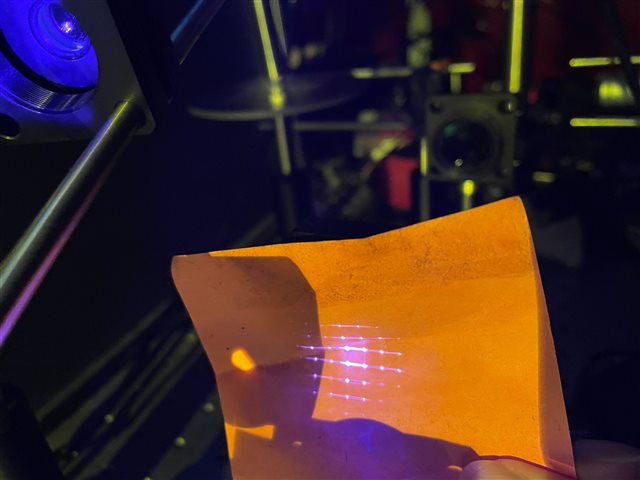Other Parts Discussed in Thread: DLP4500
Hi, we have been having some "ghost images" forming in between diffraction orders (at the "on state" projection path) while having illumination light that is well collimated (at least we think) at 24 degrees, could you please help? We use 405nm laser light coupled with optical fiber
Like showing below, there are "lines" forming very closely in between the major four diffraction orders which makes it impossible to isolate just one of them. Looking closely, we can see rough "images" forming on the lines (in between the actual diffraction orders)


